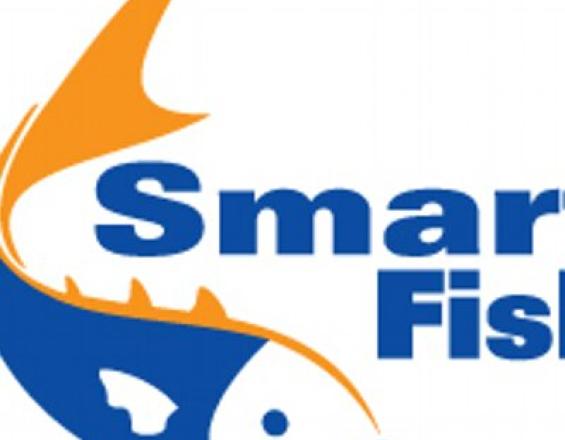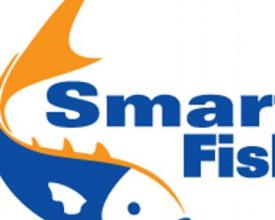
“Tagging” fishing vessels to improve compliance and revenue generation

The solution addresses the challenge of how to identify and ensure that legal fishing vessels pay their license fees to district authorities, which are important as they fund fisheries management and enforcement efforts of local government structures. It uses a color coded small plastic zip-lock cable tie to identify licensed vessels, enabling fisheries officers and local community-based structures to determine if a vessel is legal and has paid the relevant fees for a particular district.
Context
Challenges addressed
Many artisanal fisheries have a low level of compliance with fisheries legislation. The challenge is how to identify and ensure that legal fishing vessels pay their license fees. To identify legal fishing vessels and fishermen where there is a large number of artisanal vessels is a huge problem. Lack of financial resources makes it difficult for fisheries management authorities to manage these fisheries.
Location
Process
Summary of the process
A financial scheme (building block 3) was initiated to provide funds to local government authorities in order to address the following challenges:
- Collection of data and information compromised
- Capacity development low due to lack of funds
- Co-Management building could not take place
It relied on enforcement, policy advocacy, community outreach and awareness building to achieve the aim of the financial scheme, to provide funds for the collection of data, to provide input in the co-management ability to ensure improved management interventions.
Building Blocks
Strengthening the management ability of local government
District fisheries officers are supported to travel to fish landing sites and carry out briefing sessions with the local management unit (BMU), vessel owners and fishers to explain the tagging purpose and legal implications of non-compliance.
Enabling factors
- Local governments’ willingness and leadership to undertake resource management
- Local department approval and buy-in
- Community approval and buy-in
- Staff to undertake the work
Lesson learned
- Local governments are willing to invest / spend funds if there is a return on their investment.
- Local communities, for the most part, are willing to assist in the implementation of compliance activities, if it will improve the fish stocks and/or reduce illegal fishing that impacts on them.
- If chances of effective enforcement / penalties are small, fishers tend to be delinquent and will not comply with the set laws and conditions.
- Governance and management improve as the actual numbers of fishing vessels and fishermen are known per district.
- Improved compliance with licensing and registration provisions of fisheries regulations, up to 110 % in one district, lead to a decrease in the number of delinquent fishing vessels and fishers.
- Improvement in registration and licensing resulted in reduction in the number of IUU fishing vessels and fishers as vessels and fishers were now in compliance with regulations.
Cable tie tags for licensing fishing vessels
Color coded (small plastic zip-lock cable tie) tags are attached to licensed fishing vessels in a pilot approach to determine their identification effectiveness, using two colors per district: one purple for registration on a long duration tag with alpha numeric number, and one orange for the annual fishing vessel license.
Enabling factors
- Local government political leadership, as well as local department, approval and buy-in
- National government approval and buy-in for project
- Community sensitization, approval and buy-in
- Staff to deploy the tags
- Seed funding to purchase the equipment
- Fisheries officers and local community-based structures can visually determine if a vessel is legal and has paid the relevant fees for a particular district; licensed fishing vessels can be identified with 100% confidence on the landing site
Lesson learned
- Robust tools are required to operate in sometimes harsh oceanic conditions. This holds especially for electrical equipment.
- Local BMUs know the timing and whereabouts of (legal and illegal) boats. It is therefore essential to obtain their cooperation and support.
- Tags cannot be copied easily, minimizing unauthorized or illegal tagging / delinquent vessels.
A financing scheme through vessel registration and licensing
Fishing vessels are required to be “registered” as a fishing vessel before they can obtain a fishing vessel license. The Department of Surface Transport issues a vessel registration document, on the basis of a letter of support from the DFO, containing vessel name and other specifications. Subsequently, the local government’s fisheries department, specifically the DFO, needs to be approached to obtain a fishing vessel license. Upon evaluation that the vessel is duly registered, DFO issues a fishing license for the specific vessel, and a District alpha numeric code and number are attributed to it, for example TEM – 1001.
Enabling factors
- Local governments’ willingness and thorough conduct
- A financial system and audit trail
- Staff to undertake the work
- Outreach and local buy-in
Lesson learned
- In more urban areas with large concentrations of fishing vessels, it was easier for district officers to license vessels and achieve higher numbers / revenues. Where there were numerous landing sites spread out over a large area, the effort became more costly and time intensive.
- BMUs have been co-opted in some districts to undertake the licensing and registration based on a cost recovery basis, however, these are still developing concepts for Tanzania and beyond the current scope of this solution.
- District authorities collected improved revenues in most districts compared to the previous registration period (between 20 and 600% increase, see project report for detail) as boat owners licensed and registered IUU fishing vessels, and fishers registered themselves to took out licenses to fish.
- Financial resources from licensing revenues to the local fisheries organisations have increased on a year by year basis as an initial result of the pilot project.
Impacts
Improved revenue collection by seven district authorities - between 20 – 100% increase in most districts as boat owners licensed and registered IUU fishing vessels and fishers registered themselves and took out licenses. Improved compliance with licensing and registration provisions of fisheries regulations, up to 110 % in one district lead to a decrease in the number of delinquent fishing vessels and fishers. The exceeding of compliance indicates that more boats were actually present in the district than appeared on the records. These may be vessels that had not yet yet registered with the appropriate DFO. This improvement in registration and licensing resulted in reduction in the number of IUU fishing vessels and fishers as vessels and fishers were now in compliance with regulations. Improvement in governance and management as the actual numbers of fishing vessels and fishermen are known per district.
Beneficiaries
- Local community fisheries management bodies (Beach Management Units) in the pilot area
- Local government authorities
- Central government authorities
Sustainable Development Goals
Story
The level of delinquency in the coastal fisheries in Tanzania is extremely high. Official estimates are approximately 50 %, quantified using the number of vessels registered as a fishing vessel and licensed to fish. The actual number of unregistered /unlicensed fishers may be around 70%. The challenge for Tanzania is that almost the entire artisanal fishery’s management has been devolved to local district government authorities. Districts are hence responsible to generate the revenue for implementation of fisheries management measures and for enforcement of the legislation. Their main revenue stems from vessel registration and licenses for both fishing vessels fishing activities. Upon registration and licensing, fishing vessels are supposed to paint on their district registration number. As they transit from district to district pursuing migratory fish, they are supposed to pay for licenses in each district. This seldom happens, and often a random number conforming to the districts code is displayed on the vessel, and through cursory observation, the vessel appears to be in conformity with the law. The challenge was to find a cheap, effective, tamperproof and unique visual indicator that could immediately inform a fisheries inspector that the vessel is licensed to fish in that particular district. Color coded (cable tie) tags were piloted to determine their identification effectiveness, using two colors per district: one purple for registration on a long duration tag with alpha numeric number, and one orange for the annual fishing vessel license . District fisheries officers were supported to travel to fish landing sites where fishing vessels congregate to offload fish - usually located within the local beach management unit’s (BMU) jurisdiction. A briefing session was undertaken with the BMU, vessel owners and fishers to explain the tagging purpose, and the legal premise for vessel and fisher registration and licensing. In more urban areas with large concentrations of fishing vessels, it was easier for district officers to license vessels and achieve higher numbers. Where there were numerous landing sites spread out over a large area, the effort became more costly and time intensive. BMUs have been co-opted in some districts to undertake the licensing and registration based on a cost recovery basis, however, these are still developing concepts for Tanzania. In almost all districts there was a marked increase in revenue between 20% and 200%.
